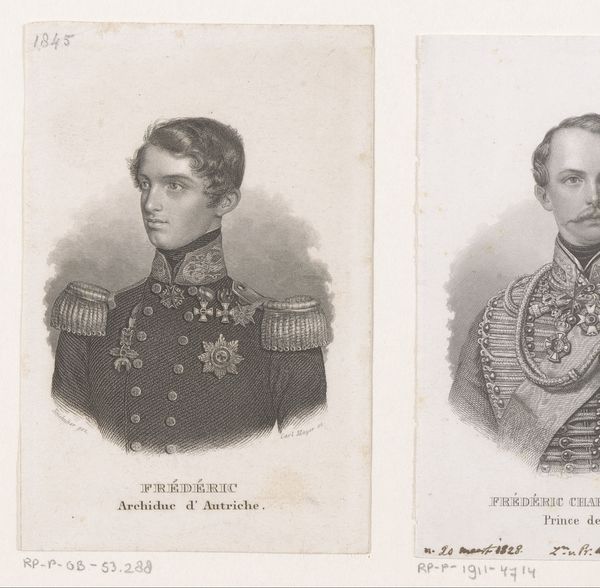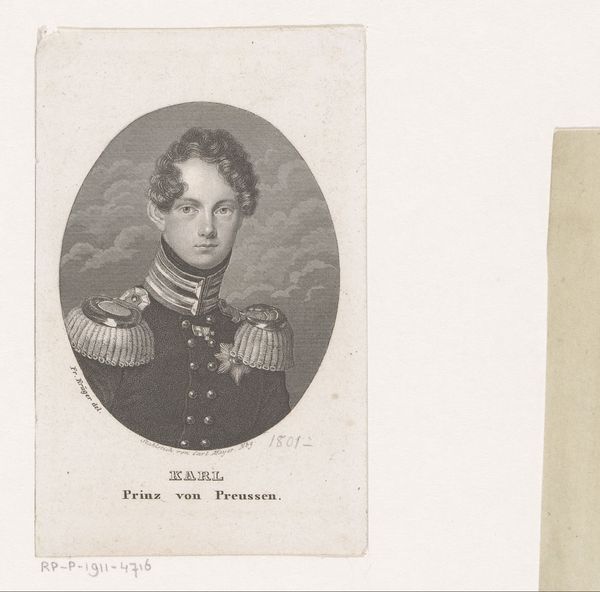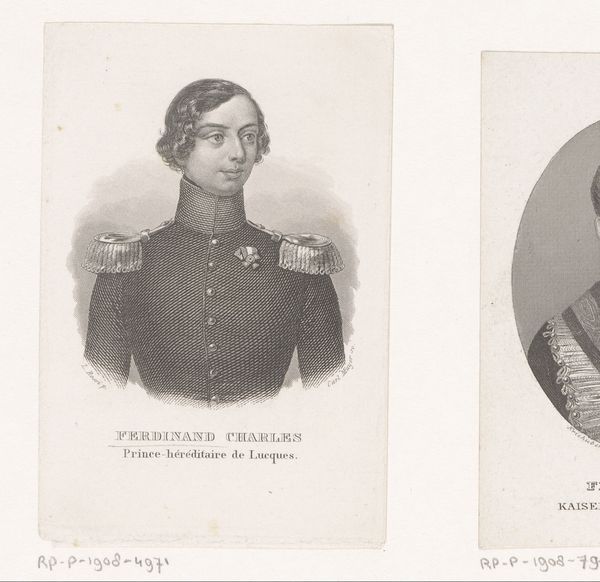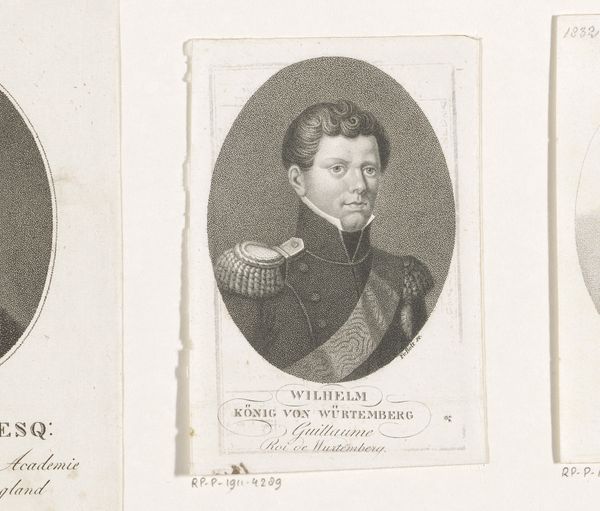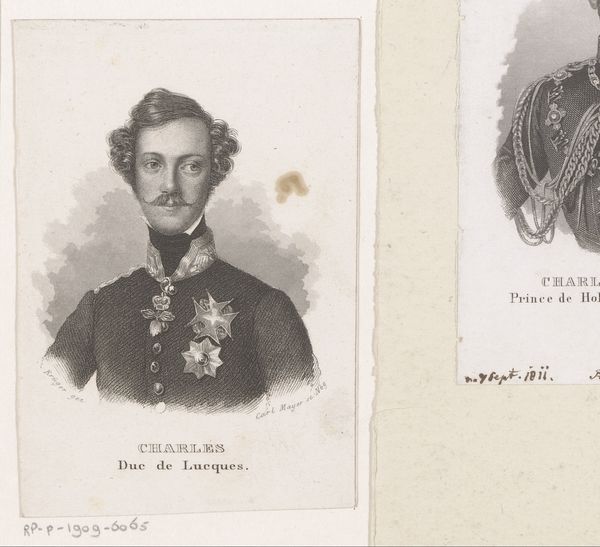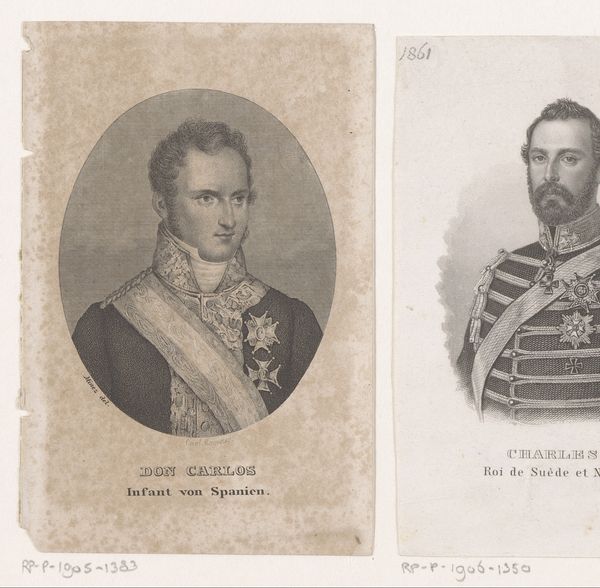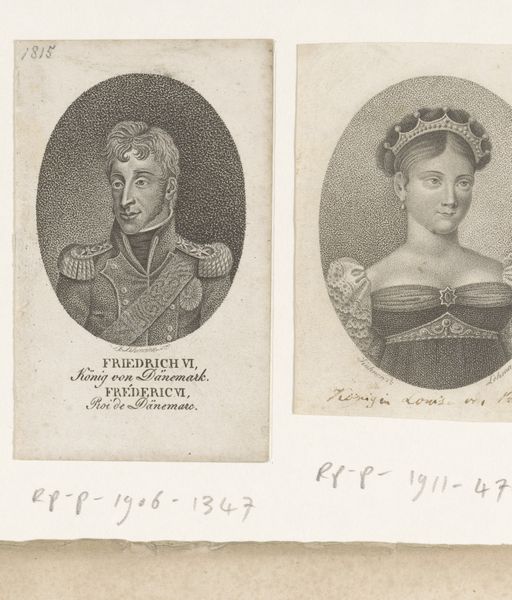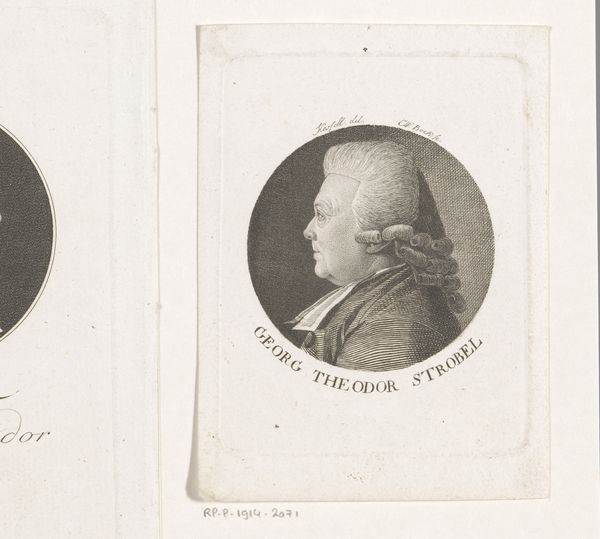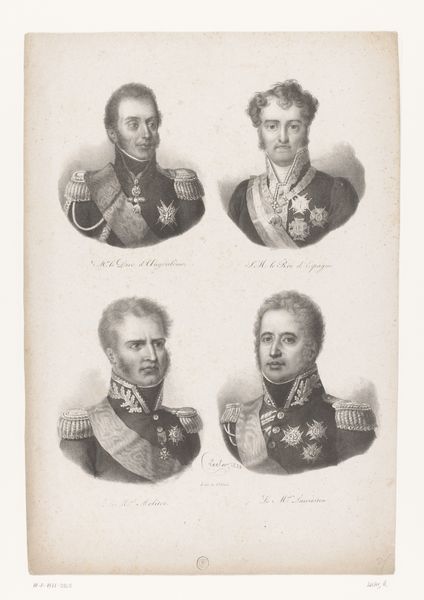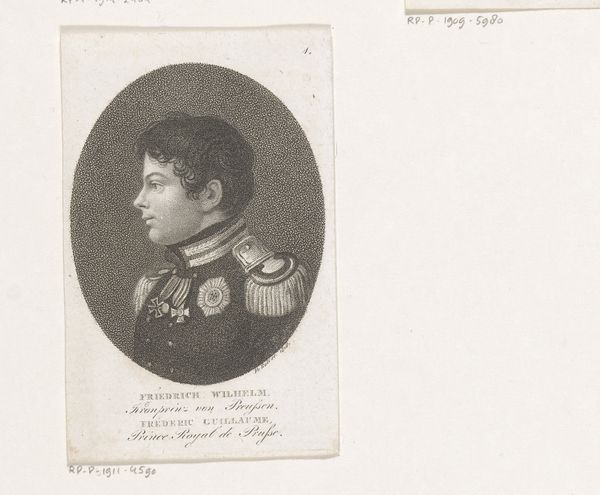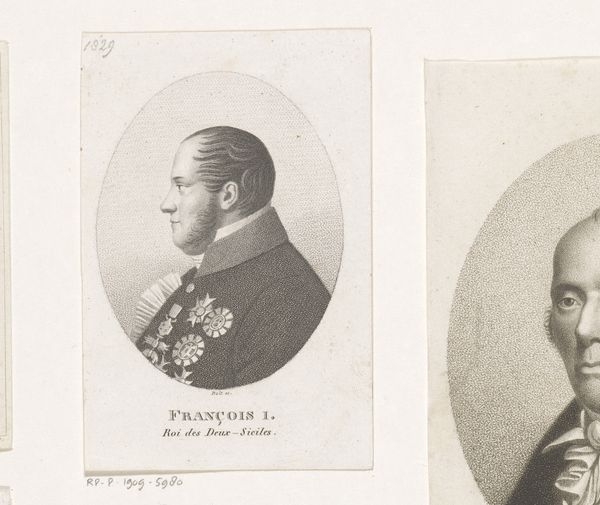
Portret van Frans V van Modena, aartshertog van ostenrijk-Este 1819 - 1868
0:00
0:00
carlmayer
Rijksmuseum
print, pencil, engraving
#
portrait
#
pencil drawn
#
imaginative character sketch
#
neoclacissism
#
aged paper
#
toned paper
#
light pencil work
# print
#
pencil sketch
#
personal sketchbook
#
pencil drawing
#
pencil
#
sketchbook drawing
#
pencil work
#
engraving
Dimensions: height 108 mm, width 73 mm
Copyright: Rijks Museum: Open Domain
Curator: Welcome. Here we have a portrait of Frans V of Modena, Archduke of Austria-Este, crafted by Carl Mayer sometime between 1819 and 1868. It is currently held here at the Rijksmuseum. Editor: It’s quite striking! I’m immediately drawn to the intricate detail achieved with what seems to be primarily pencil work. The way the light catches the subject’s face…it’s remarkably lifelike. Curator: The artwork uses techniques typical of the neoclassical movement, evident in the precision of line and the formal representation of power through portraiture. What's fascinating is understanding how images like these served the aristocracy by reinforcing ideas of legitimacy and lineage during periods of significant upheaval. Editor: Absolutely. You see, looking at it from a materialist lens, one has to consider the economic factors influencing such production. How readily available were quality drawing materials? Who had access to the artist's skills? And consider the production process itself – engraving requires significant skill and investment in tools. Curator: That’s very true. Consider the context—the role of patronage was also essential here. Frans V, as a Duke and Archduke, would have commissioned or authorized portraits to enhance his public image and perhaps consolidate his political authority. Editor: It's fascinating to think about the paper itself. Is it a heavily treated paper? You can see that the aging of the paper supports this. That creamy tone adds depth to the monochromatic portrait and the textural quality elevates it beyond mere representation, and transforms into a compelling object of display. Curator: Definitely. It makes you ponder on the distribution networks—how engravings like this allowed for the dissemination of images across geographical boundaries and thus, influenced public perception of figures like Frans V. Editor: So, when considering the social implications alongside material properties we get a holistic picture that merges artistic value with the historical forces that dictated its production and consumption. I appreciate how such a simple medium, like pencil, in skilled hands and under certain social circumstances can contribute so effectively to create representations of power. Curator: Indeed. It offers a lens through which we see the intersections of art, power, and society. Editor: Exactly! The act of drawing, printing, and distribution all deeply enmeshed within that fabric.
Comments
No comments
Be the first to comment and join the conversation on the ultimate creative platform.

